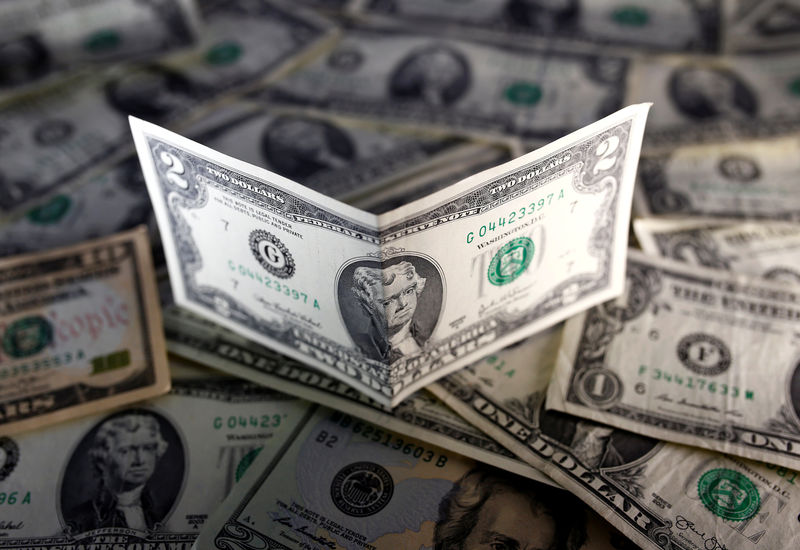Dollar edges off lows; sterling gains after strong retail sales
The U.S. dollar edged higher Friday, but remained under pressure after the Federal Reserve’s large interest rate cut, while sterling rose strongly after healthy UK retail sales data.
At 04:00 ET (09:00 GMT), the Dollar Index, which tracks the greenback against a basket of six other currencies, traded 0.2% higher to 100.480, but remained just above a 12-month low. Dollar struggling for buyers
The U.S. dollar is struggling for friends in the wake of the Federal Reserve starting a rate-cutting cycle with a hefty 50 basis points reduction to a range of 4.75% to 5%.
Markets imply a 40% chance the Fed will cut by another 50 basis points in November and have 73 bps priced in by year-end. Rates are seen at 2.85% by the end of 2025, which is now thought to be the Fed's estimate of neutral.
“But the big question for the market right now is whether the dollar is ready to break out of its two-year range,” said analysts at ING, in a note. “There seems nothing on the agenda today to justify a breakout, but suffice to say we are in the camp looking for some strong follow-through selling should DXY support levels at 99.50/100 give way.” Sterling surges this week
In Europe, GBP/USD rose 0.2% to 1.3312, with the pound up over 1% this week having hit its highest since March 2022.
Data released earlier Friday showed that British retail sales rose by a stronger-than-expected 1% in August and growth in July was revised up to 0.7%, from a previous estimate of a 0.5% month-on-month increase.
The Bank of England held its key interest rate at 5% on Thursday, after kicking off its easing with a 25-bp reduction in August.
EUR/USD traded 0.1% higher to 1.1163, up almost 1% for the week and within striking distance of the August peak of 1.1201.
The European Central Bank cut rates for the second time this year last week, but a degree of uncertainty exists over when the next move will be.
German producer prices fell less than expected in August, decreasing by 0.8% on the year, below the expected 1.0% decline. Yen slips after BOJ meeting
USD/JPY rose 0.7% to 143.62 after the Bank of Japan held interest rates steady, and said it expected inflation and economic growth to steadily increase.
The BOJ decision and forecast came just hours after consumer price index data showed inflation rose to a 10-month high in August, as increased wages pushed up private consumption.
While the yen was nursing weekly losses, it still remained close to its strongest levels for 2024, hit earlier in the week.
USD/CNY traded 0.2% lower to 7.0538, after the People’s Bank of China kept its benchmark loan prime rate unchanged, defying some expectations that it would cut rates further to stimulate the economy.
The PBOC’s decision came even as a raft of recent economic indicators showed sustained weakness in China.
Source: Investing.com
